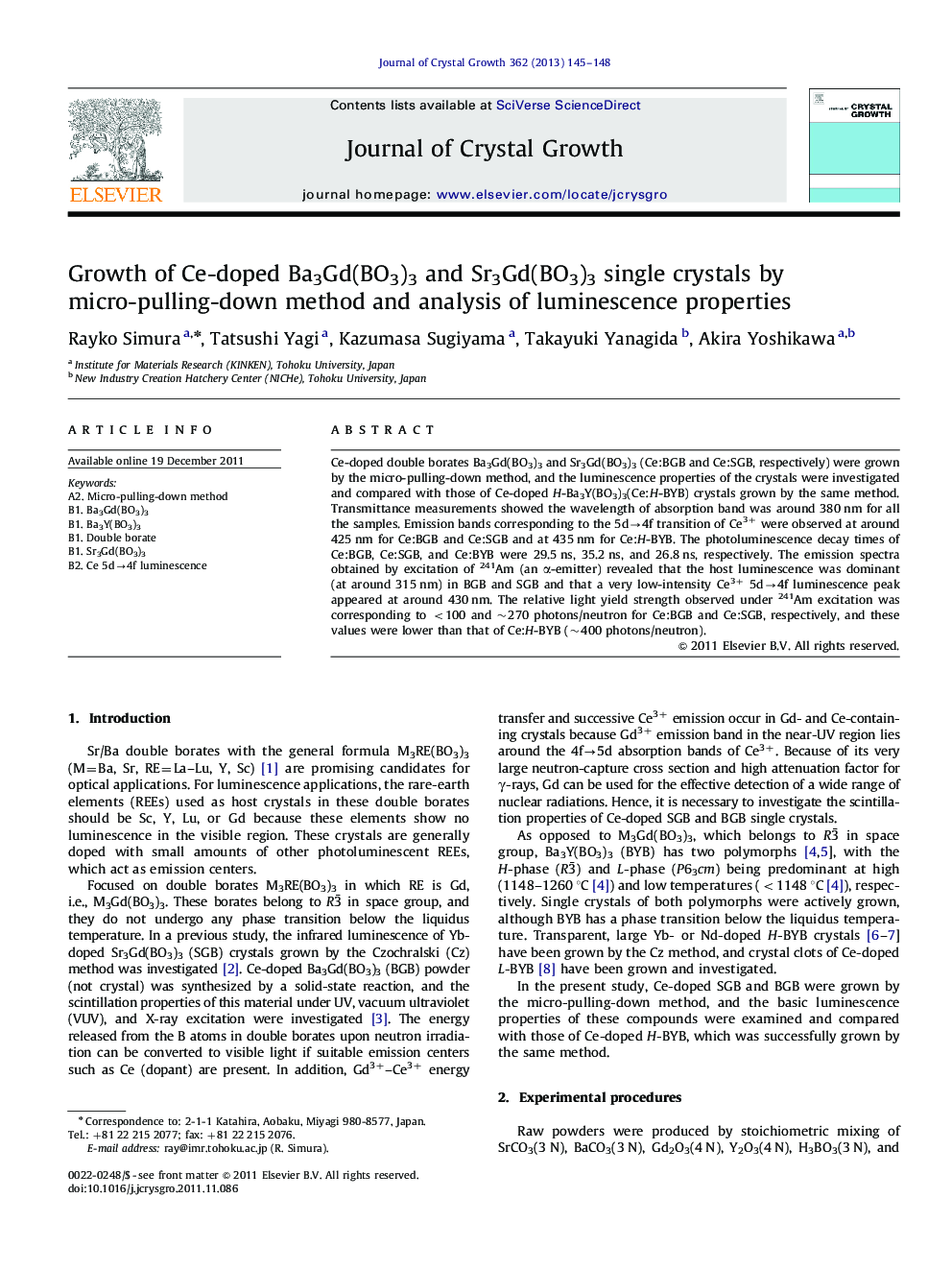| Article ID | Journal | Published Year | Pages | File Type |
|---|---|---|---|---|
| 1791296 | Journal of Crystal Growth | 2013 | 4 Pages |
Ce-doped double borates Ba3Gd(BO3)3 and Sr3Gd(BO3)3 (Ce:BGB and Ce:SGB, respectively) were grown by the micro-pulling-down method, and the luminescence properties of the crystals were investigated and compared with those of Ce-doped H-Ba3Y(BO3)3(Ce:H-BYB) crystals grown by the same method. Transmittance measurements showed the wavelength of absorption band was around 380 nm for all the samples. Emission bands corresponding to the 5d→4f transition of Ce3+ were observed at around 425 nm for Ce:BGB and Ce:SGB and at 435 nm for Ce:H-BYB. The photoluminescence decay times of Ce:BGB, Ce:SGB, and Ce:BYB were 29.5 ns, 35.2 ns, and 26.8 ns, respectively. The emission spectra obtained by excitation of 241Am (an α-emitter) revealed that the host luminescence was dominant (at around 315 nm) in BGB and SGB and that a very low-intensity Ce3+ 5d→4f luminescence peak appeared at around 430 nm. The relative light yield strength observed under 241Am excitation was corresponding to <100 and ∼270 photons/neutron for Ce:BGB and Ce:SGB, respectively, and these values were lower than that of Ce:H-BYB (∼400 photons/neutron).
► Ce-doped Ba3Gd(BO3)3, Sr3Gd(BO3)3, and H-Ba3Y(BO3)3 were grown by micro-pulling-down method. ► Ce3+ 5d–4f photoluminescence were observed. ► Light yield strength by 241Am were corresponding to 100, 270, and 400 photons/neutron.
